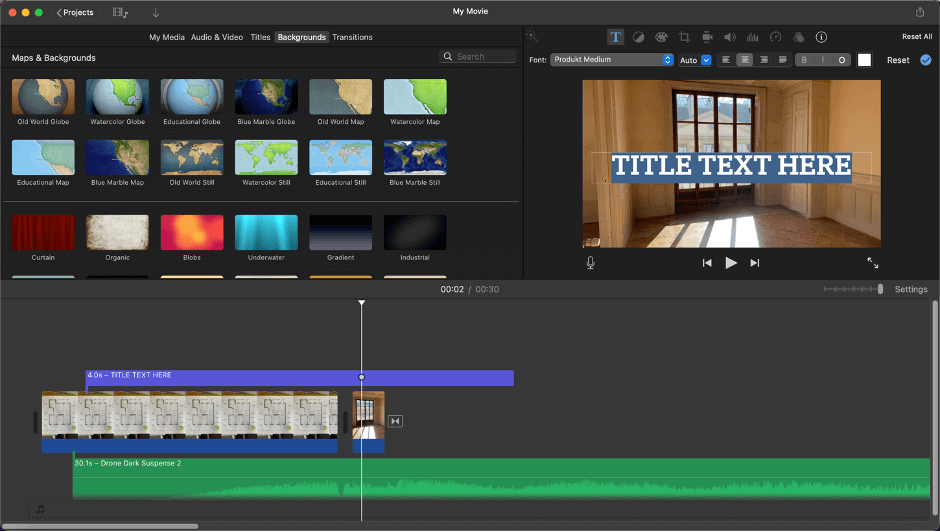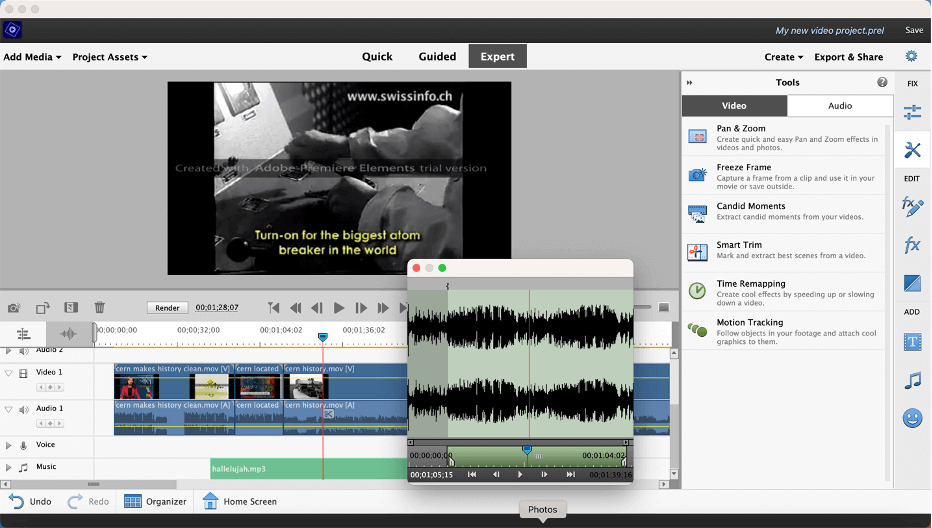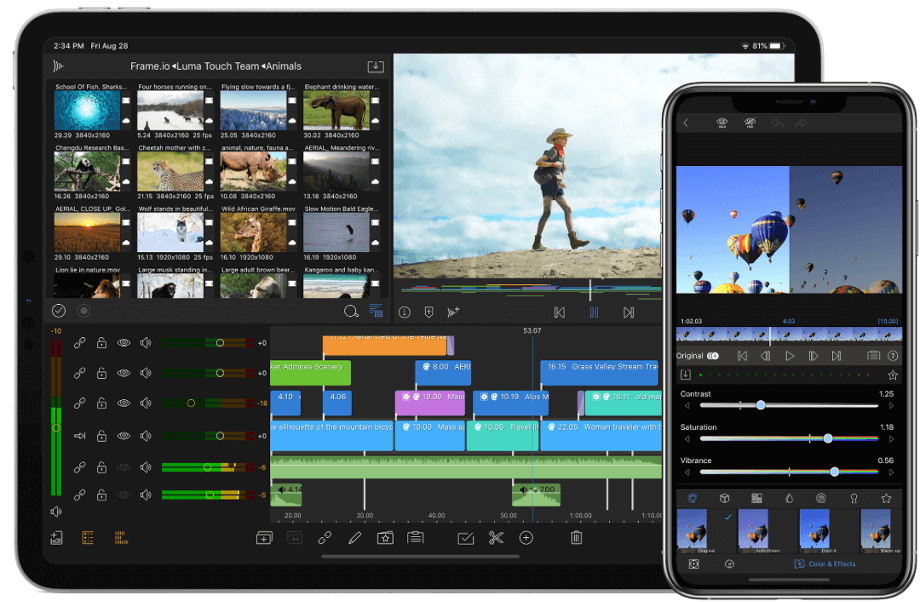Best Video Editing Software for Mac: Proud parents, YouTube stars, and Hollywood directors create short and long, lighthearted and serious, low-budget and studio-funded movies every day on their Macs.
Whatever level of expertise you have in video editing is irrelevant. Everyone starts somewhere, and whether you are just learning how to edit or have some experience, there is the correct software for you.
Also, it is irrelevant why you desire to make movies. Whether you want to express yourself creatively, connect with more people on social media, share your stories with pals, or win an Oscar for best film editing. You may accomplish any objective or passion on your Mac.
Without further ado, check out my list of the best Mac video editors for novices, intermediate users, and experienced editors below. And because these are excellent programmes you should be aware of, I’ve included a few selections in a few more specific sectors.
1. iMovie (Best for Cost-conscious Beginners)
With the Mac, there are various video editing programmes designed with beginners in mind. However, iMovie offers a few noteworthy advantages:
First off, every Mac, iPhone, and iPad already has it loaded. (It’s free, yes. for all time.)
Second, if you use a Mac, it’s likely that you have an iPhone and use it to snap pictures or record videos. You can take video with your iPhone, edit it in iMovie right on your phone or iPad, and then publish it to YouTube or TikTok using this software.
You can edit on a Mac as well, and most people do because it has more features.
The simple line is that iMovie has all the fundamental editing tools, titles, transitions, and effects. Also, it includes a vast library of both video and audio effects, and it provides sophisticated functions like recording voiceovers or adding green screen effects.
Moreover, iMovie is simpler to use than the other entry-level editors. Like Final Cut Pro (Apple’s professional editing programme), iMovie’s method for putting together your movie uses a “magnetic” timeline, unlike every other programme out there.
I don’t think it is debatable to state that Apple’s technique is both easier and faster to learn – at least until your projects get to a certain size or complexity. Professional editors dispute the benefits of the “magnetic” approach and consequently either love or loathe Final Cut Pro.
Also fairly stable is iMovie. It has been around for a while, runs on a computer that Apple built, and comes pre-installed on all Apple goods. It had better function properly, by golly.
For the same reasons, iMovie works nicely with all of your other Apple applications. Interested in importing stills from your Photos app? Add some audio that your iPhone captured? No issue.
Pros: Simple, well-known, reliable, and with lots of features
Cons: Um…
2. HitFilm (Best for Intermediate Users Looking for Effects)
HitFilm lies comfortably between editors geared towards pros. And beginners (such as iMovie and Premiere Elements) (like Final Cut Pro or Premiere Pro).
HitFilm has the impression of being made to make professional video editing simpler. In contrast to how simple iMovie and Premiere Elements feel to use.
HitFilm editing is much more similar to using Premiere Pro. Or DaVinci Decide to be more prepared to move forward when the time comes. However getting used to it does take some time. You might become irritated or a little perplexed as to why that transpired when I intended for this to occur.
But I believe you will feel less frustration than if you simply jumped into a professional editor. because HitFilm has a good layout. While packing an astounding number of complex capabilities, the interface is intuitive and doesn’t feel overly complicated.
The abundance of instructional films that are already embedded in HitFilm is quite helpful. (This is visible on the left side of the above screenshot.) Have you forgotten how or why something works? Simply look through the videos to see someone demonstrate how to do anything.
You are receiving a lot more features and capability than you would with a basic editor, so you may relax. HitFilm stands out even among intermediate editors for the range of features it offers, including all the essentials, hundreds of effects, 2D and 3D compositing, motion tracking, keying, and more expert colour grading and correction. And animated lasers, too.
Also, there is a thriving market for plugins, which allow users to buy extra functionality for HitFilm from outside developers.
Sincerely, I believe HitFilm will provide you all you need to create dynamic videos without requiring you to navigate a professional editing program’s steep learning curve. It is a good middle ground.
HitFilm does have a free version, but if you want more features and material, such sound effects, you’ll probably wind up paying for one of the paid levels. Depending on what you require, this will cost you between $6.25 and $9.99 each month (or $75 and $120 annually).
Pros: Good training resources, fantastic effects, and accessibility
Cons: Expensive
3. DaVinci Resolve (Best all-around professional editor)
One of the most capable video editing programmes is DaVinci Resolve. It is also free. Nevertheless, a few of the most cutting-edge features are missing from the free edition. Nonetheless, even the “studio” (paid) version is the least expensive among the professional video editors at $295.00 for a perpetual licence (upgrades included).
Nonetheless, there is a small learning curve with this software. You’ll need to block off some time if you’re new to video editing. Nevertheless, if you’ve used video editors before and are looking for more, you’ll like the variety and depth of capabilities that DaVinci Resolve offers.
The software is renowned for its tools for colour correction and grading. This is mostly because DaVinci Resolve started out as a specialised colour grading/correction programme and added video editing, sound engineering, and all the other features it has today much later.
When it comes to cutting-edge capabilities, DaVinci Resolve truly stands out among all professional editing tools. The most recent version, for instance, has depth mapping and surface tracking (such as the ability to alter the colours of a flag that is waving) (applying different effects to the foreground and the background of a shot).
DaVinci Resolve is also excellent for teamwork. The same project can have multiple editors working on it concurrently, or you and other experts (such colorists, audio engineers, or masters of visual effects) can all be concurrently working on the same timeline.
DaVinci Resolve’s maker, Blackmagic Design, has made a commendable effort to aid editors in becoming proficient with their programme. They offer real live training sessions in editing, colour correction, sound engineering, visual effects, and more, plus they have a tonne of excellent (long) instructional films on their Training website.
Blackmagic Design offers all these courses for free to anybody, wherever, much like their software. Finally, you have the choice to take a certification exam after finishing each course, and if you pass it, you will be able to identify yourself as a qualified DaVinci Resolve editor, colorist, etc. on your resume.
Pros: Price, outstanding advanced effects, and competent training
Cons: favours a strong (expensive) Mac
4. Premiere Pro (Best for Those Looking to Work in the Video Industry)
Several marketing firms, commercial video production organisations, and yes, big motion films now use Adobe Premiere Pro as their standard video editing application. In conclusion, having knowledge of Premiere Pro will increase your employment alternatives if you wish to work as a video editor.
The market share is also well-deserved. A fantastic application is Premiere Pro. There is a thriving community of professional users that create plugins to increase Premiere’s effects and capabilities in addition to Adobe’s ongoing addition of new sophisticated features. It offers all the essential functions.
The straightforward connection with the full Adobe creative software suite, including Photoshop, Lightroom, and Illustrator, is another virtue and the reason for its appeal with production businesses.
Finally, Adobe has (like DaVinci Resolve) embraced the need for more collaborative workflows. The business recently acquired Frame.io, a pioneer in developing the infrastructure that enables easier collaboration among video editors.
But, Premiere Pro is a resource hog, same as DaVinci Resolve. You may use a standard MacBook to run it, but as your projects get bigger, you will grow frustrated.
Also, Premiere Pro is pricey. The annual cost of $20.99 per month ($251.88 for DaVinci Resolve and Final Cut Pro) is slightly under $250. Moreover, Adobe After Effects (used to create customised effects) is an additional $20.99 each month.
All of Adobe’s tools, including Photoshop, After Effects, Audition (for audio engineering), and everything else the company produces, is now available as a bundle for $54.99 per month. But that comes to (gulp) $659.88 annually.
Pros: Excellent characteristics, teamwork tools, and market share
Cons: Expensive.
5. LumaFusion (Best overall video editor for iPad and iPhone)
In an article about the best video editing programs for the Mac, it may seem off the subject to include an iPad app. But LumaFusion has been generating a lot of excitement in the video editing community.
Simply put, there is a growing number of editing programs for the iPad, but none of them are as fully featured or well-designed as LumaFusion.
(Note: DaVinci Resolve has announced they will release an iPad version before the end of 2022, so watch this space).
LumaFusion has all the basic features you’d expect from an editor and enough of them to elevate it beyond a program for “beginners”. Like a professional editing program, you’ll find more advanced features like color correction, shot stabilization, and tools for basic audio engineering.
And LumaFusion did a great job rethinking how one would operate a video editor on a touchscreen device. Controls and setting are easy to find and easy to tweak. (Though when you download the application, you may notice it is rated for ages “4+” and I think that might be a tad optimistic.)
One particularly attractive feature of LumaFusion is that it refused to take a side in the debate between the magnetic and traditional track-based timelines. It simply created its own hybrid of the two. And everybody seems to be happy.
And for those of you wondering just how you are supposed to edit a movie – which can quickly explode to oodles of gigabytes – on an iPad, one of the most novel (and really helpful) features of LumaFusion is its support for external hard drives.
This brings me to the biggest drawback of LumaFusion: It exports timelines in a format that only Final Cut Pro can easily import. While you can, in principle, convert this file to a format usable in DaVinci Resolve or Premiere Pro, these conversions are never as simple or clean as you’d like them to be.
Pros: assistance with external hard drives!
Cons: It is an iPad editor, and it doesn’t work well with Premiere Pro or DaVinci Resolve.













